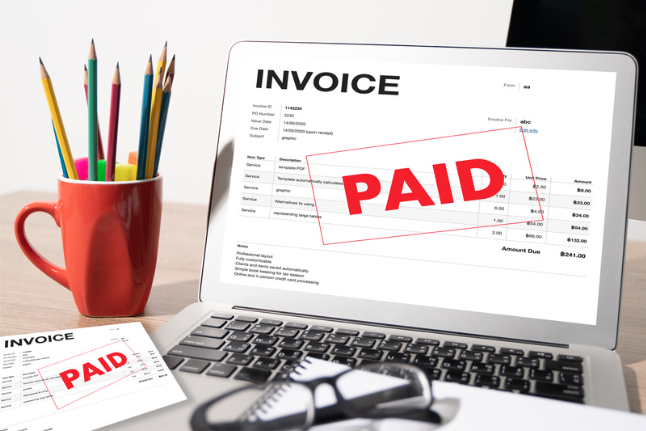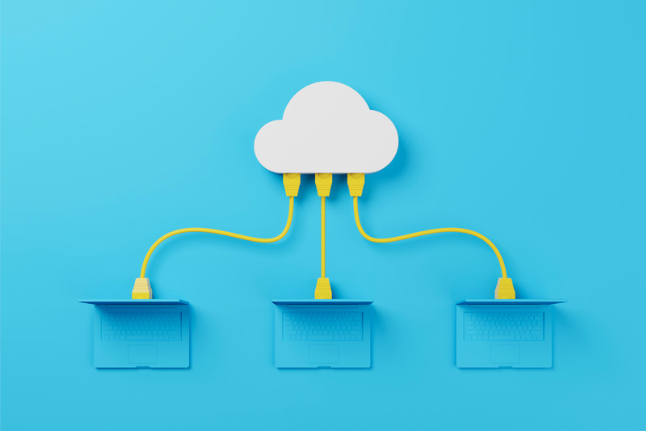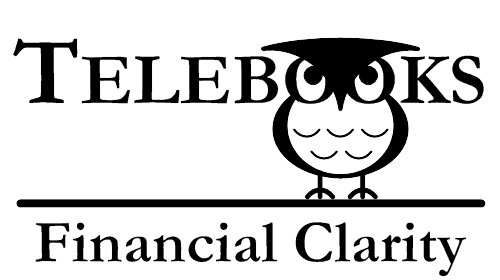Accurate Invoicing and Timely Payments: A Guide for Architects
Let’s face it—architecture firms often face challenges with accurate invoicing and timely payments. Late payments, cash flow gaps, and the administrative burden of managing invoices can affect your business. It’s frustrating when your work is done, but the money isn’t in the bank.
But you can solve these problems. By using the right tools and workflows, you can create a system that ensures invoices are accurate and payments arrive on time.

In this post, we’ll dive into how accurate invoicing and timely payments can significantly improve your firm’s financial health. When supported by an efficient, integrated system, this is possible without increased administrative costs. You’ll learn how to streamline your processes, reduce stress, and, most importantly, get paid faster.
Let’s start by looking at why accurate invoicing and timely payments matter.
Why Accurate Invoicing and Timely Payments Matter
Accurate invoicing and timely payments aren’t just “nice to have” for architecture firms—they’re essential for survival. When done right, they can transform your cash flow, increase profitability, and take the weight of administrative tasks off your shoulders.

Improved Cash Flow
Sending accurate invoices on time ensures faster payments and improved cash flow. Clients are more likely to pay promptly when invoices are error-free and align with agreed terms. This reduces the risk of payment delays, which often create cash flow gaps.
When you send a late or inaccurate invoice, clients may take longer to pay, putting your firm in a bind. But when invoices are accurate and timely, you keep cash flowing, allowing you to pay expenses and invest in growth.
Increased Profitability
Timely payments directly affect your profitability. Late payments can slow projects, cause delays, and require costly follow-ups. Ensuring timely payments helps avoid these issues, keeping projects on track.
Every time you chase a payment, you lose valuable time. That time could be spent moving projects forward. When payments come in on time, you avoid delays and keep projects within budget.
Reduced Administrative Burden
Managing invoicing manually can be a full-time job, especially if payments are late. But with an efficient invoicing system, you can significantly reduce the time spent on administrative tasks.
An automated system handles much of the work for you, from generating invoices to sending payment reminders. This reduces the need for manual follow-up and frees up your time to focus on what really matters—growing your business. It’s all about working smarter, not harder.
High-Level Workflow for Monthly Financial Operations
Managing your firm’s financial operations efficiently facilitates timely payments and smooth cash flow. By following this high-level workflow, you can create a consistent routine that keeps your financial processes running smoothly. Accurate invoicing and timely payments are just one part of the bigger picture—how you manage your day-to-day financial tasks is just as important.

Here’s the workflow for managing your architecture firm’s monthly financial operations:
1. Deposit Client Payments Daily
Deposit payments as soon as they’re received, ideally on a daily basis. Automate ACH payments when possible. This keeps cash flow steady and ensures payments are recorded promptly. Mobile deposit makes check deposits quick and easy.
2. Review Timesheets Weekly (Mondays)
Every Monday, review timesheets from the previous week. Make sure all billable hours are accurate and attributed to the right projects. This ensures your invoices will be correct when it’s time to bill clients.
3. Submit Bills and Expenses Semi-Monthly (10th and 25th)
Twice a month, on the 10th and 25th, post bills and expenses to your accounting file. Attribute project-related expenses to the correct project for accurate invoicing and profitability tracking.
4. Run Payroll and Pay Bills Semi-Monthly (10th and 25th)
After submitting bills, run payroll and pay bills on the same dates—the 10th and 25th. Pay project-specific bills, like subcontractor invoices, only after receiving client payments.
5. Reconcile Accounts Monthly (After the 10th)
During the second week of each month, reconcile your accounts for the previous month. Reconciling your accounts is one of the best ways to catch errors and to fix them. Usually, the sooner you catch an error, the easier it is to fix.
6. Create Draft Invoices Monthly (After the 25th)
During the last week of each month, create draft invoices. Include any new charges and subcontractor fees. Submit these drafts for review by the project leads.
7. Review, Update, and Approve Invoices
When reviewing invoices, make sure progress billing reflects the work completed, including subcontractor work. Update and make corrections, as needed. Approve invoices only after verifying the information is correct.
8. Send Approved Invoices
Send approved invoices to clients. Use A/R software like Bill.com to manage sending and payment reminders for overdue invoices.
By following this high-level workflow, your firm’s monthly financial operations will run smoothly, minimizing errors and ensuring that invoices are accurate and sent on time. The key is to establish regular, repeatable routines for each financial task, allowing your firm to focus more on billable work and less on chasing payments.
Building the Right Application Stack for Invoicing and Payments
To maintain efficient financial operations and ensure accuracy, having the right tools in place is essential. At the heart of your financial operations is your cloud accounting system—such as QuickBooks Online. This system serves as the central hub where everything comes together. Your Professional Services Automation (PSA) software and Accounts Receivable (A/R) tools integrate seamlessly into this hub, creating an efficient, streamlined workflow that supports accurate invoicing and timely payments.

Let’s explore how these tools work together and why they’re critical for your firm’s financial success.
Cloud Accounting System: The Central Hub for Your Financial Operations
Your cloud accounting system acts as the core of your financial operations. It functions as the central hub, pulling together data from your PSA software and A/R tools. Every invoice generated, payment received, and expense tracked flows through this accounting system, giving you a comprehensive, real-time view of your firm’s financial health.
This integration eliminates the need for manual data entry and ensures that your financial records are always up to date. With a cloud accounting system, you can easily reconcile payments, track cash flow, and generate financial reports that provide insights into your firm’s profitability and performance.
PSA Software: Managing Projects and Tracking Billable Work
In this setup, your PSA software does double duty as both the project management system and the tool for tracking billable work. It keeps track of everything related to your projects—hours worked, subcontractor fees, and expenses. Since your PSA software integrates with your cloud accounting system, every hour and expense logged is automatically sent to your central hub, reducing the risk of errors and ensuring accurate invoicing.
For example, as your team progresses through different project phases, the PSA software tracks their time. When it’s time to bill the client, the PSA software enables you to create accurate invoices that reflect the work completed, including any subcontractor costs. These invoices are then seamlessly posted to your cloud accounting system, ensuring that all financial data is updated and reconciled in real time, without the need for manual entry.
A/R Management Software: Simplifying Payment Collection and Reminders
While PSA software helps track and manage projects, your A/R software focuses on collecting payments and automating reminders. By integrating with your cloud accounting system, your A/R software ensures that invoices are sent, payments are tracked, and reminders for overdue payments are automatically managed. When a client pays an invoice, the A/R software communicates with your accounting system, updating your central hub and keeping your financial records in sync.
The combination of PSA software, A/R tools, and your cloud accounting system provides a seamless process that allows you to efficiently manage payments and track all financial activity in one place. This integrated approach reduces manual errors, saves time, and gives you greater control over your firm’s cash flow.
By building the right application stack with a cloud accounting system as your financial hub, PSA software for project management and tracking, and A/R software for payment collection, your architecture firm can operate more efficiently. Accurate invoicing and timely payments become second nature, and your financial operations run smoothly without the need for manual oversight.
Step-by-Step Workflows for Invoicing and Payment Collection
Now that you have the right tools in place, let’s look at the practical steps for setting up accurate invoicing and timely payments. By following a clear, step-by-step workflow, you can ensure that your invoicing is error-free and that payments come in on time. The goal is to make this process as smooth and automated as possible.

Here are the workflows that will help you stay on top of both invoicing and payment collection.
Accurate Invoicing Workflow
Getting your invoicing right from the start sets the foundation for timely payments. Here’s a simple workflow to follow:
- Track Billable Work with PSA Software: Use your PSA software to track every billable hour your team works on each project. Include subcontractor fees and any additional project-related expenses. PSA software ensures that all of this data is logged, reducing the risk of missed billing opportunities.
- Create Draft Invoices: At the end of the month or after key project milestones, use your PSA software to create draft invoices. These drafts should include all billable work and any subcontractor costs. This step ensures that your invoices are accurate and reflect the actual work completed.
- Review and Approve Invoices: Before sending invoices to clients, take time to review them for accuracy. Make sure the charges align with the agreed-upon fee schedule and that no important details are missing. Once reviewed, approve the invoices for the next step.
- Post Invoices to Accounting Software: After approval, post the finalized invoices to your cloud accounting software. This ensures that all the financial data is updated and reconciled in real time within your central hub.
- Synchronize A/R Software: Next, synchronize your A/R software with the cloud accounting system to ensure both systems are in sync. This step allows for a seamless transition to the payment collection process and ensures accurate tracking of invoices.
- Send Invoices via A/R Software: After synchronization, send the invoices to clients using your A/R software. Tools like Bill.com make it easy to manage the invoicing process, offering clients multiple payment options, such as ACH and credit cards.
By following this workflow, your firm can maintain accuracy throughout the invoicing process. Accurate invoicing and timely payments go hand in hand, and this workflow makes sure everything runs smoothly.
Payment Collection Workflow
Once the invoices are out, the focus shifts to collecting payments efficiently. Here’s how to streamline that process:
- Offer Multiple Payment Options: Flexibility is key when it comes to getting paid on time. Use your A/R software to offer clients a range of payment options, from ACH to credit cards. The easier it is for clients to pay, the quicker you’ll receive payments.
- Automate Payment Reminders: Set up automatic reminders through your A/R tool for any overdue payments. These reminders can be sent at intervals you choose—such as 30, 45, or 75 days—so you don’t have to manually follow up with clients. Automation ensures you stay on top of payments without taking up your time.
- Track and Reconcile Payments: As payments come in, track them using your A/R software. This ensures that all payments are recorded accurately and that there are no outstanding invoices. Reconcile these payments with your accounting system to keep your financial records up-to-date.
By following this payment collection workflow, you’ll ensure that payments are processed smoothly and on time. Accurate invoicing and timely payments are easier to achieve when you have automated systems that handle the heavy lifting.
These step-by-step workflows make it easy to manage both invoicing and payment collection. With PSA software handling the tracking and invoicing, and A/R software managing payments and reminders, you can create a seamless system. The result? Accurate invoicing and timely payments without the hassle.
Real-World Example: Putting It All Together
Let’s bring everything together with a real-world example to show how integrating the right tools can transform financial operations. The following example illustrates how a small architecture firm might leverage best practices for accurate invoicing and timely payments. While Elemental Architects is fictional, the tools and strategies are real and practical for firms like yours.

Meet Elemental Architects, a small architecture firm based on the Gulf Coast, managing multiple residential and commercial projects. Like many firms, Elemental Architects struggled with invoicing delays, cash flow gaps, and the administrative burden of tracking hours and payments manually.
To address these challenges, the firm decided to implement an integrated financial system, combining QuickBooks Online, BigTime Software, and BILL (formerly Bill.com) to streamline their financial workflows. Here’s how they did it:
The Problem
Elemental Architects had been using separate systems to track time, generate invoices, and manage payments. This siloed approach resulted in invoicing delays, missed billable hours, and late payments from clients. Their outdated processes created significant cash flow issues, and the firm was spending too much time on administrative work instead of focusing on design and project management.
The firm’s goal was to improve accuracy, speed up payments, and reduce the administrative burden of managing finances.
The Solution: Integrated Financial System
Elemental Architects implemented the following solution:
- BigTime Software for Project and Time Management
- BigTime became the firm’s central platform for tracking billable hours, project progress, subcontractor fees, and related expenses. It ensured that every team member’s work was accurately logged and tied to the correct project.
- Instead of manually tracking time and expenses, BigTime provided real-time visibility, allowing the firm to create accurate invoices that reflected all billable work and expenses.
- QuickBooks Online for Accounting
- The firm used QuickBooks Online as its cloud accounting hub. BigTime seamlessly integrated with QuickBooks, allowing invoices generated in BigTime to be posted automatically to the accounting system.
- QuickBooks Online also provided essential financial reporting, facilitating management of cash flow and profitability.
- BILL for Payment Management
- To handle payments, Elemental Architects adopted BILL. Once invoices were created and posted to QuickBooks Online, BILL was synchronized with QuickBooks to send out invoices to clients.
- BILL automated payment reminders, sent them to clients at intervals such as 30, 45, and 75 days, and offered multiple payment options like ACH and credit cards. This reduced the time spent chasing overdue payments.
The Results
After implementing this integrated system, Elemental Architects saw immediate improvements:
- Faster Invoicing and Payments: With BigTime tracking every billable hour and QuickBooks Online reconciling all financial data, invoices were generated and sent to clients faster. The integration with BILL automated the payment process, significantly reducing payment delays.
- Improved Cash Flow: By speeding up invoicing and automating payment reminders through BILL, the firm saw a dramatic improvement in cash flow. Clients paid faster, which allowed Elemental Architects to pay subcontractors and other project expenses on time.
- Reduced Administrative Burden: The firm drastically cut down the time spent on administrative tasks. The seamless integration between BigTime, QuickBooks Online, and BILL meant there was no need for manual data entry, reducing the risk of errors and freeing up more time for the team to focus on design and project management.
Elemental Architects’ decision to integrate BigTime, QuickBooks Online, and BILL allowed the firm to achieve accurate invoicing and timely payments while minimizing the administrative burden. The firm now operates with more efficiency, spends less time on back-office tasks, and focuses more on what truly matters—delivering great designs to clients.
Conclusion
Accurate invoicing and timely payments are crucial for the financial health and success of any architecture firm. By integrating the right tools—such as a cloud accounting system, PSA software, and A/R management software—you can streamline your financial operations, improve cash flow, and reduce the administrative burden that often comes with managing multiple systems.
In the example of Elemental Architects, we saw how implementing QuickBooks Online, BigTime Software, and BILL transformed their invoicing process, allowing them to get paid faster, reduce errors, and focus more on their core business: delivering exceptional designs.
By adopting similar systems, your firm can experience the same benefits—faster invoicing, more consistent payments, and less time spent on back-office tasks. The key is to build an integrated workflow that eliminates manual data entry, automates routine processes, and keeps your financial records accurate and up to date.
Are you ready to take control of your firm’s financial operations and make invoicing and payment collection easier? Subscribe to our blog for more practical tips on streamlining your architecture firm’s workflows. Or, explore how Telebooks Network can help you implement the right financial tools and processes to keep your firm running smoothly.




